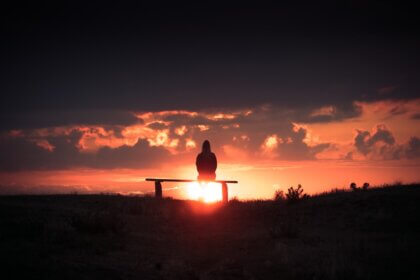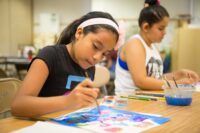
It’s summer, and changing routines is part of the deal. Kids are at home, the days are longer, and there’s some free time. It’s a time of year that is rich with opportunities; we dream of doing things differently, whether being outside, practicing a sport, or being playfully creative.
In fact, play is an important way as children we begin to build knowledge and it’s fun at the same time. We humans, throughout our lives, have the innate urge to be creative and we start with a thirst to learn this way. Creativity benefits both our cognitive development and emotional well-being, giving us positive feelings of success and happiness.
For many of us, our creative muscles probably have atrophied. Providing the time, changing up a space, and having a healthy mind-set can get us back in shape in this creative season.
Why don’t we make more time for creative play? Because our culture and institutions don’t value or understand creativity’s importance. Luckily, we all have the ability to regenerate our creative muscles in startling ways, like a lizard regrowing its tail. Even those who never thought they were creative can start to develop it at any age. It’s never too late!
At what age in the human lifespan, would you guess that we are at “The Creative Peak,” the top of our game of our creative abilities? If you guessed age one to five, you’re right. Yet if we are so marvelous at an early age, why aren’t we soaring in our abilities at our current age?
One reason is “The Creative Cliff,” a term neurological researchers use to describe the moment the average human has the greatest decline in creative growth. At first grade the drop is 200% in creative ability in just one year! Why? The reason is pretty simple. Contrast how a preschool child, aged 0-5 spends their time, their focus, and energy with a kid of 6-7. First graders’ days are occupied by uniform schedules and regimented demands of literacy and numeracy. In schools without robust elementary visual and performing arts programs, there is little to no time spent on creativity to engage, connect, and excite them.
By second grade, creativity bounces back with a roar, but at the end of third grade it drops again because of the pressure and focus of standardized tests in schools. In fourth grade, the second biggest decline in creative growth occurs because of the emergence of puberty and peer pressure. Self-confidence declines and self-consciousness increases as kids try to fit in the crowd.
For parents, there are numerous ways to counteract these drops. Summertime is a prime opportunity. Give kids freedom – unstructured time without schedules that allows them to find themselves again through play. Encourage them to collaborate with others on projects that build and deepen relationships and experiences, give them the
agency to mess around with new ideas that they select themselves, and focus them on the process rather than perfecting the product. Their creative resilience will spring back quickly.
And while cultivating play is essential for kids, it is equally important for adults to tap into our own creative development and find ourselves again. We can model being creative and that has an impact. Try something new, reach out to a new friend, laugh at mistakes while taking calculated risks, explore an unknown area, or get out into nature.
Nurture the dormant seeds of your own creativity and it will take root, grow, blossom, and inspire. We each have the ability to restore our sense of Wonder.



Be First to Comment